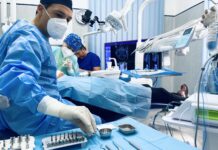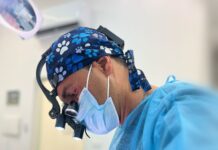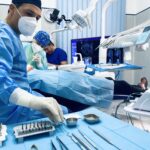Assisted reproductive techniques (ART), in vitro fertilisation (IVF) and intracytoplasmic sperm injection (ICSI), have been very successful in overcoming the many underlying causes of female and male infertility. It is estimated that at least ten million children have been born worldwide using these techniques. In Italy, where between 70,000 and 80,000 procedures are performed each year, the success rate ranges between 17% and 18% for each embryo transfer and reaches 28% after repeated transfers. “Medicine has reached important milestones in this field: today there are in fact very high success rates and fewer risks for women thanks to the techniques of genetic analysis of the blastocyst (PGT-A), the new tests on endometrial receptivity, the possibility of selecting embryos before a transfer, and the possibility of performing heterologous fertilisation in Italy too,’ says Prof. Ermanno Greco, President of the Italian Society for Reproduction and Director of the Reproductive Medicine Department at the Villa Mafalda Clinic in Rome.
by Roberta Imbimbo
Prof. Greco, in recent years the selection of embryos to be transferred into the uterus has emerged as a fundamental requirement for the success of assisted fertilisation techniques. What can you tell us about this?
In most centres, the selection of embryos to be transferred into the uterus is based on their morphology, i.e. priority is given to transferring the best quality embryos. However, the evaluation of embryo morphology does not guarantee the success of the operation as there is no correlation between morphological quality and genetic health; in simpler terms, even a beautiful embryo may be unhealthy and vice versa. The in vitro fertilisation technique with morphological selection of embryos is certainly not the most appropriate means of ensuring the right success rates for all those couples who have a higher risk of producing chromosomally abnormal oocytes and embryos, such as women over 35/36 years of age, women with a history of polyabortion, couples with repeated failed attempts, and in cases of severe male infertility. It can be adopted, on the other hand, in young couples with a good ovarian reserve because, in these cases, oocyte genetic alterations are not high. Several international studies have shown that in this group of patients, under optimal laboratory conditions, the success rate of in vitro fertilisation after transfer of a single blastocyst (the day 5 embryo) is 30%, but rises to 40% after transfer of any remaining frozen embryos, 55% after a second ovarian stimulation, and 62% after the third stimulation.
Today it is possible to increase these percentages if embryo selection takes place not only taking into account the morphological characteristics of the embryo but also morphokinetic ones. Is this correct?
Absolutely yes! Today, the most advanced laboratories have an innovative instrument, called Embryoscope, equipped with an artificial intelligence algorithm (Kidscore, IDAscore) for embryo selection. Time lapse technology and artificial intelligence are a real revolution in the world of reproductive medicine, as they are able to improve the success of IVF/Icsi programmes. It has recently been discovered that the speed of embryo development, the so-called morphokinetics that can be analysed with time lapse technology, especially when coupled with artificial intelligence-based analysis systems, allows a better selection of the embryo to be transferred into the uterus, with a positive impact on success and pregnancy rates.
Even with the new genetic techniques, Next Generation Sequencing (NGS), which make it possible to assess the genetic quality of the embryo, do the percentages of carrying babies increase?
Absolutely: 60-70% of women get pregnant from the first attempt. Several scientific studies have clarified that the embryos’ ability to nestle in the uterus depends on two critical factors: 70% on their genetic chromosomal normality and 30% on the uterine tissue’s ability to be receptive and thus to produce certain molecules essential for implantation. The genetic health of the embryo, on the other hand, is determined 80% by the genetic quality of the oocytes and 20% by that of the spermatozoa. Unfortunately, all women, even the youngest, always have a proportion of their oocytes that is not chromosomally healthy; this proportion increases with increasing maternal age: under 30 it is about 30% but after 35 it is at least 50-60%. It is clear that if the in vitro-formed embryo is derived from a diseased oocyte, it is also diseased, and therefore unable to give birth to a viable pregnancy. The recent technique of chromosomal analysis using NGS (Next Generation Sequencing) makes it possible to assess, unlike previous methods, not only all the embryo’s chromosomes, but also the mitochondrial DNA, i.e. the powerhouse that plays a fundamental role in embryonic and then foetal development. The advantages for those carrying out pre-implantation diagnosis are therefore many: both preventive (reduction in the failure rate), therapeutic (reduction in the risk of miscarriage) and ameliorative (increase in success rates). The success of pre-implantation diagnosis also depends on the number of oocytes produced during ovarian stimulation, which can be ascertained in advance by subjecting the woman to two examinations with daily responses: the ultrasound count of antral follicles and the AMH (Antimullerian Hormone) assay. Women who have a low ovarian reserve can still resort to a special type of hormone stimulation protocol called ‘DUOSTIM’: it consists of doing two stimulation protocols in the same month to reach an adequate number of oocytes for the technique.
But the achievements in this field do not end there.
Exactly. In fact, it has been shown that severe male infertility can have a further negative impact on success rates. Two techniques have proved to be crucial here: high-magnification sperm selection (IMSI) and sperm selection with intact, non-fragmented DNA (MACS). Thanks to all these successes, as well as the possibility of resorting to heterologous fertilisation also in Italy – Constitutional Court ruling no. 162/2014 has established that the ban on heterologous assisted fertilisation is unconstitutional – it is no longer admissible for a couple to travel abroad to realise their dream of bringing a child into the world. In fact, our centre’s success rates are quite similar to those of other European countries!
Prof.Ermanno Greco Medicina e Biologia Della Riproduzione • Clinica Villa Mafalda Roma – Tel. 06 86094776-0686094797 – segreteriavillamafalda@icsiroma.it






















































